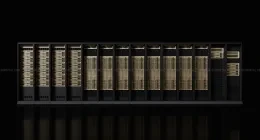Social media are great platforms for entertainment, communication, business marketing, and so on. This explains why it has attracted billions of users. However, one of the biggest worries today is social media accounts being hacked. Many horror stories are coming up of people amassing a large following and suddenly losing their accounts to hackers.
As a matter of fact, according to statistics, approximately 1.4 billion social media accounts are hacked every month.
So, strengthen your account security to avoid being the next victim. The good news is that we have compiled the best ways to secure your social media accounts.
1. Create Individual Passwords for Each Account
Never use the same password for different social media accounts. If you have identical passwords and hackers access one account, they can easily take over others. The best thing is to create individual passwords for each.
This keeps your other social media accounts safe in case one of them is hacked. In addition, don’t just create any password but generate a strong one that no one can easily guess. Some of the top features of stronger passwords include:
- Have a mixture of numbers and letters
- Over eight characters long
- Don’t include your personal data like names.
2. Log Out After Use
Many social media users make the common mistake of not logging out of their accounts. Without a doubt, staying logged in makes life easy. It saves you from the hustle of entering a password every time you want to check your Facebook or Instagram.
However, it makes your accounts more vulnerable to intruders and their bad intentions. If you leave any account open, and someone else accesses your device, the person can easily take it over. Keep safe by logging out of your social media apps every after a session.
This security measure also applies to other platforms. For example, if you shop online and forget to log out, your account is at risk of going on a shopping spree. You have to log out regardless if it is a shopping site, your private banking, or gambling in your favorite online casino. For the latter, you can enjoy the best online casino slots in Australia listed on legit comparison sites.
3. Don’t Log in On Public Devices
Using computers in public places, such as libraries and internet cafes, involves many risks. First of all, other people can easily access your online activity on public computers if the network is unsecured.
Also, most of the public devices don’t have premium anti-virus software to handle these threats. Further, shoulder surfing is also common in public places. Strangers can view your screen and monitor your private activities.
However, if it is unavoidable, change passwords for accounts you used on public computers. It is also safe to clear your browser history after using them.
4. Change Your Passwords Regularly
Another top security measure is to create new passwords regularly. Changing the password for each social media account at least every three months keeps them safe. Additionally, other situations in which you have to change your passwords include:
- Suspecting unauthorized access
- Discovering malware or phishing software
- After logging in at public places
- If you haven’t logged in for some time
- After a security attack or breach.
When you face any of the above situations, don’t wait for three months. But change your passwords immediately.
5. Ignore Suspicious Ads and Links
Annoying ads and links are common on social media. Some even have catchy write-ups and campaigns to arouse your interest. They may look harmless, but most of them contain malware, hidden viruses, and phishing attacks. So, when you follow them, the malicious software steals your confidential information.
The best thing is to avoid clicking suspicious links because they can expose your social media account to scams and hackers.
6. Enable Login Notifications on All Accounts
It is an amazing feature on various social media platforms. Login notifications keep you updated whenever someone tries to log into your account. In fact, they provide the easiest way to monitor suspicious activity across all your accounts.
Once you enable the feature, you receive real-time alerts in case of an unknown login attempt. This enables you to take the necessary measures as soon as possible. For example, you can change your password for your social media account.
7. Avoid Public Wi-Fi Connections
You should also keep away from public Wi-Fi. In most cases, it has lax security, which gives hackers an advantage to steal your passwords. Sadly, if you frequently use public Wi-Fi to log into your social media accounts, you risk losing them to hackers. Here are some of the dangers of using unsecured public Wi-Fi:
- High risks of identity theft
- Stealing your passwords
- Ransomware attacks
- Infecting your devices with malware
- Taking over your social media accounts.
On the other hand, if you can’t stay away from using it, get a reliable VPN service. It provides maximum protection by encrypting all your data as you use the network.
8. Embrace Two-Factor Authentication
It is a cyber security measure that adds an extra security layer to your social media accounts. Two-factor authentication reduces page loss, identity theft, and fraud. It does so by making it difficult for hackers to access your social media accounts.
On top of your username and password, you have to enter a unique code to open your account. The good news is that the code is sent to only your phone via text or an authentication app. So, even if the hackers steal your login details, they can’t access your social media accounts without the 2FA.
Keep Your Social Media Accounts Safe
Cyber security has become a big issue in the online world because of the increasing threats. Therefore, your responsibility is to take the necessary precautionary measures to keep safe.




